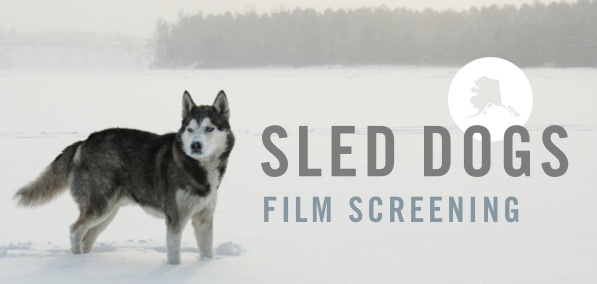The Secrets of Sled Dogs Revealed

Courtesy of ETHAN SHEA / THE OBSERVER
February 25, 2018
As winter continues to bring cold weather and snow to the city, we are reminded of the faraway Alaskan tradition of the Iditarod— the Last Great Race. In this 1000-mile Alaskan journey from Anchorage to Nome, the most athletic dogs in the world take mushers across mountains through tundras in less than two weeks. The annual tradition is beloved by fans all over the nation and is treated as a sporting event akin to the Super Bowl. In the documentary “Sled Dogs,” director Fern Levitt and producer Arnie Zipursky reveal what goes on behind the scenes of this event. What is shown brings to light the inhumane treatment of sled dogs and leads the audience to question the ethics of all mushers.
A running motif throughout the film is a chain spinning around a pole. This is often seen at sled dog farms where dogs are chained to a pole for the entirety of their lives. The creatures are shown desperately running in circles in attempts to burn off some of the energy they have been forced to bottle up their entire lives. In some states, it is legal to keep your dog on a chain indefinitely as long as the chain is at least 6 feet in length. This is just one of the inhumane laws Levitt critiques in her film. When it is put onto the screen by Levitt, there seems to be no argument that massive changes must take place in the way sled dogs are raised and trained. Despite the clear inhumane treatment, the film shows through town hall meetings that the government has no desire to change the current state of the dog sledding industry.
In her film, Levitt interviewed and exposed individuals who abuse their sled dogs. When asked about the rigorous training that sled dogs are forced to go through, owners often responded with the mindset that their dogs are more machine than animal. Trainers would also say that their dogs love to run despite the fact that dogs cannot give consent to the hard labor they endure. In “Sled Dogs,” Levitt set out to prove that a 1000-mile race is too much for any dog to handle, and by the end of the film I was undoubtedly convinced.
The aftermath of far more heinous crimes, including the senseless slaughter of hundreds of dogs, are also shown in this film. I was shocked that atrocities of this magnitude could fly under the radar for so long, especially since one investigation took place in Colorado. I was even more appalled that the perpetrator was only convicted because he killed his dogs in a way that was not government approved. Levitt reveals to her audience that sled dogs are legally nothing more than property to their owners in this eye-opening film.
The content depicted in this documentary is upsetting, but “Sled Dogs,” for the sake of the thousands of abused dogs, is a very necessary film. Changing the way sled dogs are treated will not be an easy task, but by opening people’s eyes to the truth, change will be made possible. As a dog lover, I was troubled by what the film revealed, but I am also glad that there are people like Fern Levitt who are fighting those doing harm to our innocent, furry friends.









Lucy Shelton • Feb 25, 2018 at 8:30 pm
I agree that some of the behind-the-scenes cruelties, especially the chained existence of the dogs, are difficult to watch, but necessary, especially if you care about dogs. Another part that was upsetting to me was when an Iditarod rookie rejected the advice of the veterinarian to drop his dog.
The Iditarod should end. This is a once-a-year grueling, treacherous, unnecessary race for only about 68 mushers. Approximately 1,088 dogs (68 mushers each with 16 dogs) start the race, and half the dogs don’t finish due to illness, injury, or exhaustion. Dogs die just about every year. Four dogs died last year, bringing the total to at least 150 since 1973, which averages 3 per race.
Lucy Shelton • Feb 25, 2018 at 8:00 pm
Thank you for this review! I agree that some of the behind-the-scenes cruelties, especially the chained existence of the dogs, are difficult to watch. Another part that was upsetting to me was when an Iditarod rookie rejected the advice of the veterinarian to drop his dog.
The Iditarod should end. This is a once-a-year grueling, treacherous, unnecessary race for only about 68 mushers. Approximately 1,088 dogs (68 mushers each with 16 dogs) start the race, and half the dogs don’t finish due to illness, injury, or exhaustion. Dogs die just about every year. Four dogs died last year, bringing the total to at least 150 since 1973, which averages 3 per race.